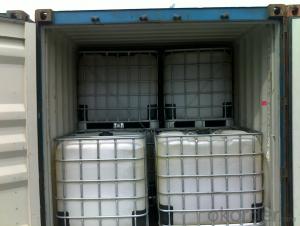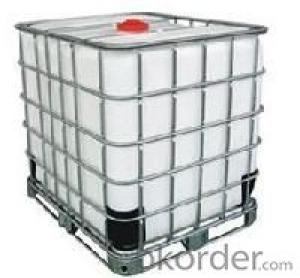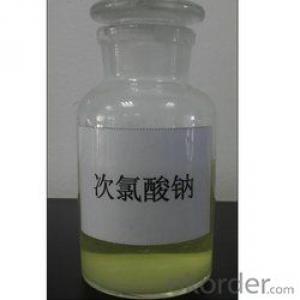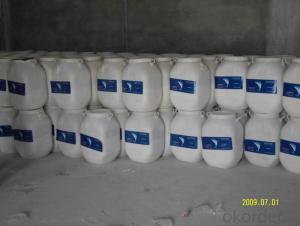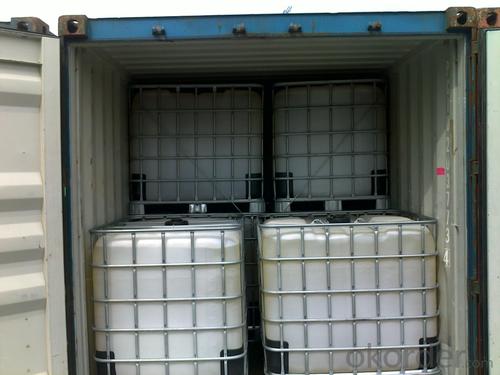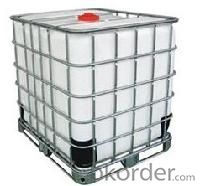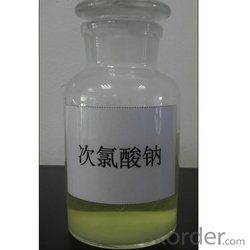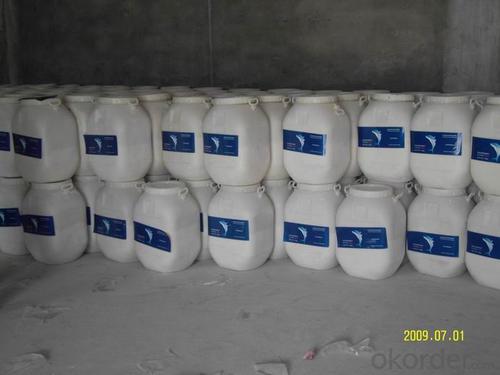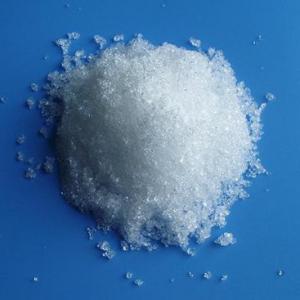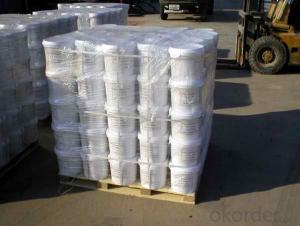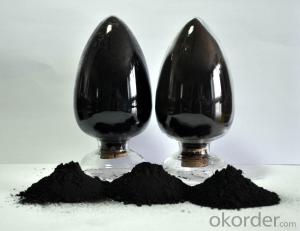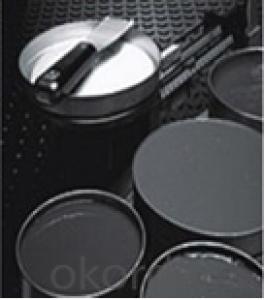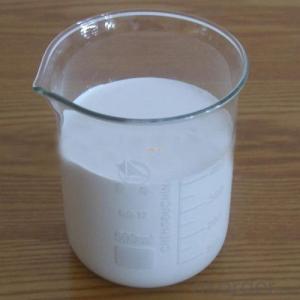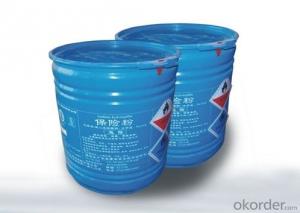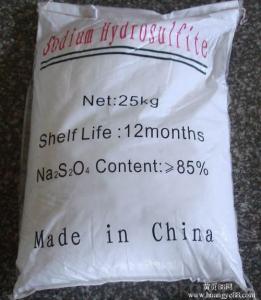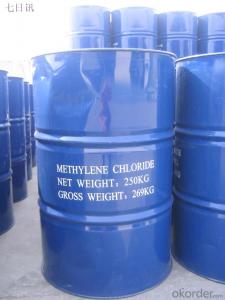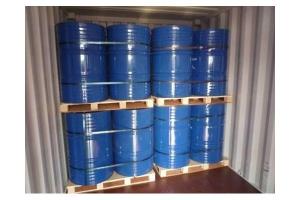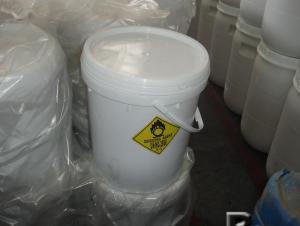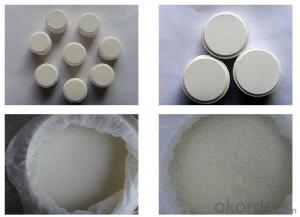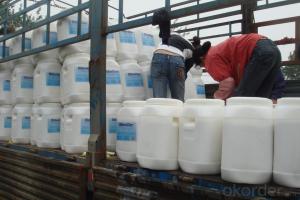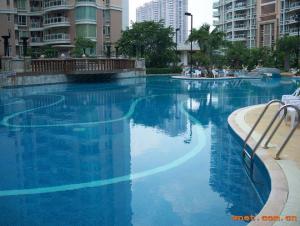Cheap Price Popular Goods Sodium Hypochlorite
- Loading Port:
- Tianjin
- Payment Terms:
- TT OR LC
- Min Order Qty:
- 25 m.t.
- Supply Capability:
- 6000 m.t./month
OKorder Service Pledge
OKorder Financial Service
You Might Also Like
Sodium Hypochlorite
CAS NO: 7681-52-9
Chemical Formula: NaClO
Molecular Weight: 74.44
Appearance: Yellow transparent Liquid
Standard: HG/T2498-1993
Specification:
Available Chlorine: 8%-16%
NaOH: 1% Max
Transportation Info:
Class: 8 UN NO: 1791 PG:III
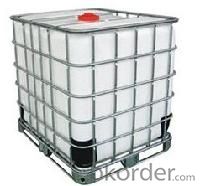
Application:
Disinfection for swimming pool, drinking water, cooling tower and sewage and waste water, food, and farming, hospital, school, station and household etc
Good bleaching and oxidation in paper and dye industry.
Normal Packing: 30kg drum, 1200kg IBC Tank
Sodium hypochlorite solution 12%
Product Spesification
Test item | Standards GB 19106-2003 |
Product Name | Sodium hypochlorite |
Active chlorine | 10%, 12%, 13%,15% |
Free alkali (NaOH) | 0.1-1.0 |
Iron (Fe) ≤
| 0.005% |
Pb≤
| 0.001% |
As≤
| 0.0001 |
Appearance | Light yellow-green liquid |
Certification | SGS,BV, ISO9001 |
Package: 25 kg plastic drum,200L plastic drum or 1000L IBC tank
Solid Sodium Hypochlorit
1) Solid Sodium Hypochlorit is white or light yellow green, crystalline, alkaline, lightly absorptve humidity and easily solvable in water and alcohol.
2) Solid Sodium Hypochlorit is an oxidizng agent with high efficiency and an excellent bleaching ingredent, its afficiency is aqual to 10 times of bleaching powder.
3) Solid Sodium Hypochlorit is stable when stored under room tenperature or normal condition, its stability is bigger than sodiun hypochlorite and smaller than sodium chlorate.
4) When mixed solid sodium chlorite and alkaline solution are heated over 70 centigrade, it resoves chlorine hydrogen.
5) Solid Sodium Hypochlorit is easily explosive, buring or poisinous when met, , bumped or rubbed with wooden bits, organic substance and reeductive substance.
- Q: Carbon dioxide and hydrogen in the catalyst and heating conditions, the reaction of water and methane, the chemical equation is what
- CO2 + 4H2 = catalyst, heating = 2H2O + CH4
- Q: Chemical production of iodine and magnesium with water as catalyst!
- In the 250mL three bottles were equipped with spherical condenser and constant pressure dropping funnel, in the condensate tube connected to the anhydrous calcium chloride drying tube. The flask was placed with 1.5 g of magnesium chip and a small tablet of iodine, 10 g of bromobenzene and 30 mL of anhydrous ether were mixed in a constant pressure dropping funnel. First 1/4 of the mixture into the flask, a few minutes later see the magnesium surface of the bubble generated, the solution was slightly cloudy, iodine color began to disappear. If no reaction occurs, use a hot water bath. After the start of the reaction, stir, slowly dropping the remaining bromophene ether solution, dropping the rate to keep the solution was slightly boiling state, after adding, in the water bath to continue reflow 0.5h, magnesium tablets full effect.
- Q: Why the catalyst after the chemical reaction of its quality and chemical properties unchanged
- In fact, the catalyst reaction also enters, which changes the rate of positive and negative reactions ... enhances the reactive molecules of the reactants, thereby changing the reaction rate ...
- Q: What is a catalyst and how does it make a reaction go faster?
- Catalysts change the rate of the reaction (faster / slower) without being consumed (used up) in the reaction. They do this by providing a lower energy (easier) pathway from reactants to products. For example in the reaction A + B -D, we can split up the reaction into the two half-reactions below. The first describes the two reactants coming together and the second describes the product formation. A + B -AB AB -D If we add a catalyst which both A and B bond to easier than they do to each other this can increase the rate of the reaction by bringing A and B together on the catalyst. This can be represented with the half-equations below. A + B + Cat -ABCat ABCat -D + Cat
- Q: Name one case in which catalyst poisoning is useful?
- alkynes can react with hydrogen in the presence of a catalyst such as palladium to form alkanes, if they catalyst is poisoned you can produce alkenes instead
- Q: Is the catalyst in the field of inorganic chemistry?
- In particular, the chemical and homogeneous catalysis of inorganic chemistry has deep origins. Inorganic chemistry, oxides (such as metal oxides), family elements (such as the chemical behavior of transition metal elements) can be provided for catalytic science Support and guidance.
- Q: In the chemical reaction, why can the catalyst speed up the reaction rate
- V2O5 (vanadium pentoxide) catalyzes the oxidation of sulfur dioxide to sulfur trioxide, and no catalyst is difficult to occur.
- Q: what is a catalyst ?
- anything that speeds up a reaction, chemical or otherwise, between two things
- Q: Word editor when playing chemical equation = with the above conditions or how to adjust the size of the catalyst, how to make it centered,
- Open the word - insert - object - WPS3.0 formula - and then select the "label arrow template", you can add a catalyst.
- Q: Are the catalysts for upgrading the weapons components that i may have a few of, or very rare ones?
- Catalysts can only be used when the item is ready to evolve. On top of that you can't use a different kind of catalyst than the one actually require and you can't use too many or too few. Catalysts are basically automatic as long as you have enough, all you can do is choose to use them. On the other hand, you CAN accidentally use sells for a premium as a material. Those items are universally horrible as a material, but sell really well in the shop. Don't use them by accident, sell them as soon as you can.
Send your message to us
Cheap Price Popular Goods Sodium Hypochlorite
- Loading Port:
- Tianjin
- Payment Terms:
- TT OR LC
- Min Order Qty:
- 25 m.t.
- Supply Capability:
- 6000 m.t./month
OKorder Service Pledge
OKorder Financial Service
Similar products
Hot products
Hot Searches
Related keywords
